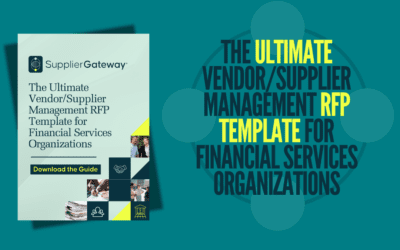Starting a supplier diversity program from the ground up is certainly a challenging endeavor with lots of specific hurdles to overcome. One of the biggest challenges we hear about is getting stakeholders like upper level management and C-suite executives to buy into the cause. Ultimately, instituting a supplier diversity program in your organization requires a fundamental cultural shift that starts from within. A little bit of external social pressure never hurts, either.
There are, however, specific areas that you can discuss with stakeholders when trying to sell a supplier diversity program. While there are mandates in place in the US that require organizations of a certain size to spend a certain amount of money with diverse suppliers, focusing on this “bare minimum” strategy undermines the more direct and tangible benefits that come along with having a robust supplier diversity program.
Here are four talking points that you can use to help shift your organization’s culture around instituting a supplier diversity program.
Instituting a Supplier Diversity Program is the Right Thing to Do Ethically and Economically.
If your organization is concerned with responsible corporate citizenship, instituting a supplier diversity program is simply the right thing to do. Your business may already have diversity initiatives in place for workforce and investment. Supplier diversity runs parallel and often intersects with other diversity initiatives that are already part of your organization’s culture.
Supplier diversity isn’t just good for ethics— it’s good for economic growth.
The U.S. Small Business Administration estimates that the US has about 8 million minority-owned companies. These companies generate some $400 billion in economic output, leading to 2.2 million jobs and $49 billion in annual tax revenue according to the National Minority Supplier Diversity Council.
Diverse-owned and small businesses are a massive site of growth in the US economy. A study conducted in 2015 by Womanable and American Express showed that woman-owned businesses in the US created over 300,000 new jobs while male-owned businesses cut over 1 million jobs.
Organizations that fail to see the ethical or economic value of adopting inclusive practices are certain to be left behind.
Supplier Diversity Programs Create Stronger, More Resilient Supply Chains
Your organization’s supply chain will simply be more agile and resilient when it includes diverse suppliers. Having more sourcing options in your supplier pool means that when one supplier falls through, another supplier can come through.
Instituting a supplier diversity program alongside a multi-sourcing strategy ensures that your supply chain is better protected from things like natural disasters, pandemics, and unforeseen emergencies.
Supplier Diversity Programs Save Money and Create New Opportunities
Diverse and small businesses are often more price competitive than their large, non-diverse counterparts, so including them in your supply chain encourages competition and drives down costs.
According to this study, even when procurement teams had even slightly higher supplier diversity adoption rates, they managed to generate around 133% better returns on the cost of procurement, which created an extra $3.6 million for their organization’s bottom line.
Another study shows that organizations that adopt supplier diversity programs are more likely to penetrate into new markets and find new customers and clients.
Supplier Diversity Programs Foster Innovation and Collaboration
Innovation oftentimes happens outside of mainstream markets, and that’s oftentimes where small and diverse suppliers are forced to operate. These suppliers differentiate themselves from their larger competitors by constantly innovating and working with their clients on innovative solutions. Small and diverse businesses also tend to be more adaptive and can quickly find solutions to your organization’s challenges.
Without access to these nimble small and diverse suppliers, your organization won’t be able to access the full spectrum of innovation that naturally happens when you prioritize a diverse supplier base. Sometimes finding and accessing these suppliers can be difficult, but there are several ways your organization can find and interact with them.












